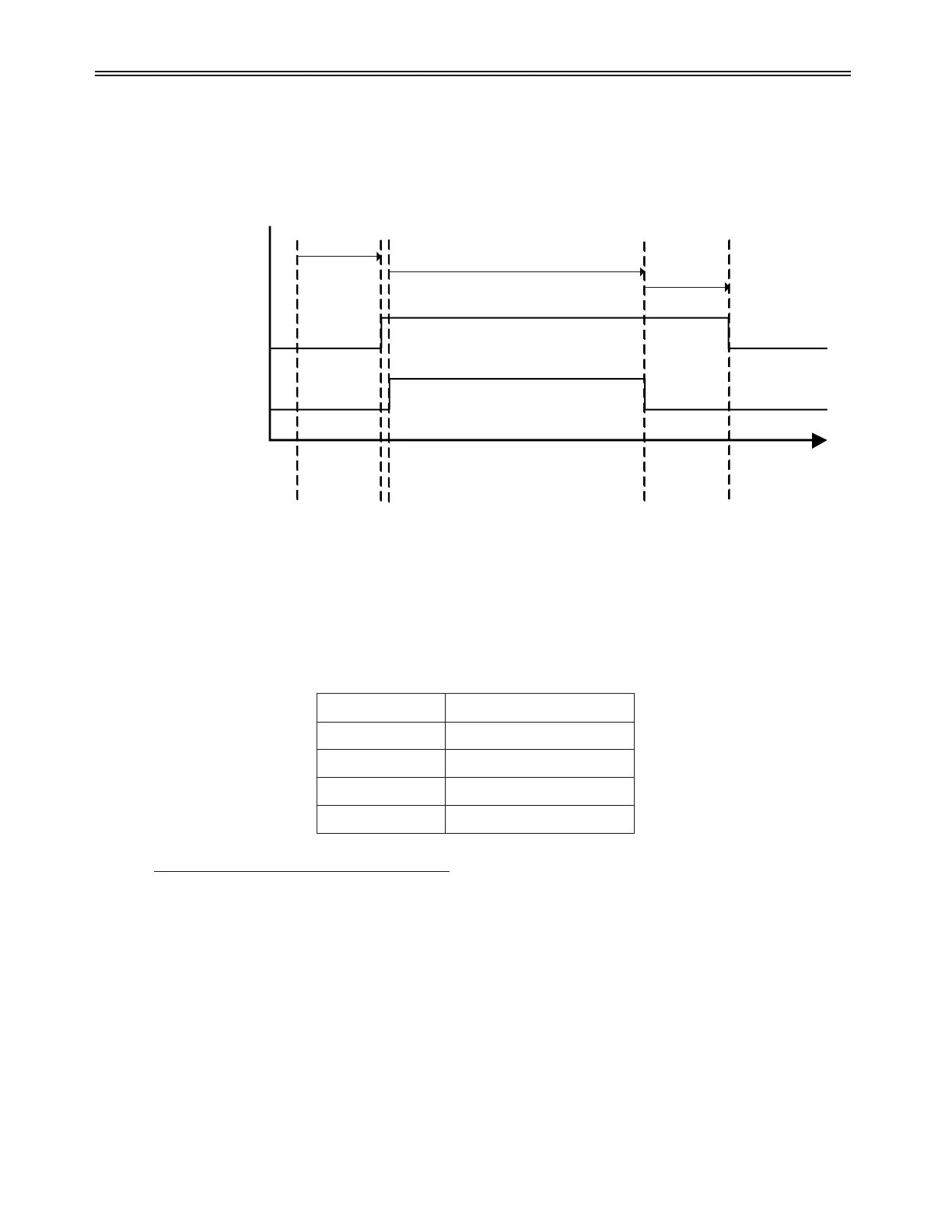7.5.6 DC Brake Timing
The MX
2
DC injection brake timing is shown below:
After the DC Brake Time has expired, the Braking Relay is held energized to allow the DC current to decay before opening the
freewheel path. This delay prevents a contactor (if used) from having to open significant DC current which greatly prolongs the life of
the contactor. This delay time is based on motor FLA, the larger the motor the longer the delay time. The delay after DC brake time is
approximately:
Motor Overload Calculations During DC Injection Braking
During DC braking the MX
2
Solid State Motor Overload Protection is fully active. During braking the Running Motor Overload setting
is used. The MX
2
adjusts the overload calculations based on whether Standard Duty or Heavy Duty braking is used. The overload
calculations are also adjusted based on whether the standard Current Transformers (CTs) are used for current feedback or if the optional
Hall Effect Current sensor is used for current feedback.
z NOTE: Discretion must be used when DC injection braking. Motor heating during DC injection braking is similar to motor heating
during starting. Although the Motor OL is active (if it has not been intentionally disabled), excessive rotor heating could still result if the
load inertia is very large, braking level is high, or the brake time is set too long. Caution must be used to assure that the motor has the
thermal capacity to brake the desired load in the desired period of time without excessive heating.
154
7 - THEORY OF OPERATION
Stop
Commanded
time
DC Brake
Delay Time
DC Brake
Time
Starter SCRs On, DC Current Applied
DC Injection On
DC Injection Off
Braking Relay Energized
DC Brake
Time
Expired
Delay to allow
contactor to
close before
applying DC
current
Braking Relay
opens after a
delay to allow
residual DC
current to decay
Delay after
DC Brake
Brake Relay Off
Brake Relay On
Figure 38: DC Injection Brake Timing
Motor FLA Delay after DC Brake Time
10 A 0.4 seconds
100 A 0.8 seconds
500 A 2.3 seconds
1000 A 4.3 seconds
